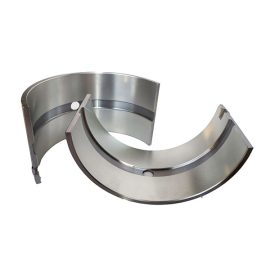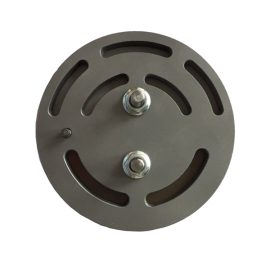The discharge valve, also referred to as the delivery valve, is responsible for releasing compressed air from the cylinder to the receiver or downstream system.
It opens when the pressure in the cylinder exceeds the pressure in the receiver or downstream system, allowing compressed air to flow out.
After the compression stroke, as the piston begins its downward movement, the discharge valve closes to prevent air from flowing back into the cylinder.
Compressor Discharge Valve
The primary function of the discharge valve is to control the flow of compressed gas from the cylinder to the discharge piping system. It opens to allow the compressed gas to exit the cylinder and closes to prevent backflow.
Maintain Compression Efficiency:
By preventing backflow of gas into the cylinder, the discharge valve helps maintain the efficiency of the compression process. It ensures that the compressed gas is directed out of the compressor without any loss of pressure.
Protect the Compressor:
The valve protects the compressor from potential damage that could be caused by backflow of gas. This is especially important during the non-compression phase of the piston cycle.
Ensure Operational Safety:
Proper functioning of the discharge valve is crucial for the safe operation of the compressor. A malfunctioning valve can lead to overpressure situations, which might result in equipment damage or even safety hazards.
Valve Element: The movable part (such as a poppet, plate, or reed) that opens and closes to control gas flow.
Spring: In many designs, a spring is used to help return the valve element to its closed position when the pressure differential decreases.
Retainer: Holds the valve components in place and ensures proper alignment and operation
Mesh Discharge Valves
The structure design of the valve plate guided by the elastic arm is frictionless and suitable for diversified structural types under oil-free conditions. The optimal design can be selected according to different operating conditions.
Performance advantages: long life; energy saving: a type with anti-impurity characteristics; a type with anti-oil viscosity characteristics;
CT valve-high-performance non-metallic valve type for high-speed, oil-lubricated compressors
HF valve-the best choice for nitrogen and hydrogen compressors in the nitrogen fertilizer industry
Double shock valve-the best metal valve type for medium and high pressure process compressors
R type valve-the best metal valve type for low pressure air and carbon dioxide compressors
The discharge valve is used to control the rate of flow of air from the system. It usually has a setting that allows the flow of air to be controlled.
This valve is commonly used to regulate the amount of air that goes into a system from an air compressor. It is used to control the rate at which the air is released from the compressor. It is also used to control the amount of air that is added to a system. The discharge valve has a spring inside it that allows the valve to be controlled.
A spring is used because it is a very flexible material and can be moved easily.
In summary, the compressor discharge valve is a key component that controls the flow of compressed gas from the compressor cylinder to the discharge system, maintaining efficiency, reliability, and safety.












